A chainsaw is a portable power tool that effectively and efficiently cuts wood using a quick-moving chain. It makes cutting, felling, limbing, bucking, and pruning of trees and shrubs very easy. Thus, chainsaw became a very famous power tool that is strong, fast, and powerful.
But, just as Uncle Ben had said, ‘With great power comes great responsibility,’ it is right for using a chainsaw too.
Well, Pete Parker was Spiderman and had to fight supervillains, but the case of chainsaw is not so severe. While using a chainsaw, you mostly need to protect yourself from it (unless you are on a rampage). Chainsaw ranks on the top of the list of dangerous power tools available without a license.
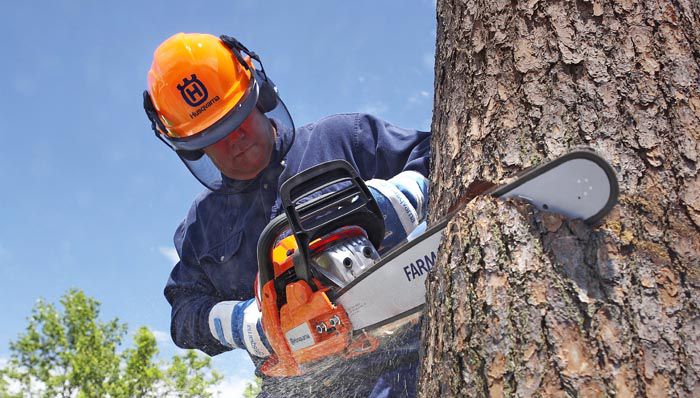
(I remember going on a rampage using a chainsaw in GTA Vice City, do not get inspired. I was a child back then!). Thus, the question ‘How to use a chainsaw?’ is very vital.
It is essential not to take the chainsaw lightly and take every precaution and care possible. Go through the user manual, pro tips, and safety guidelines to reduce injury chances due to the chainsaw.
Always remember that using a chainsaw is a skill that develops upon constant usage. Every time you use a chainsaw, you learn more and more.
It becomes essential to know the potential issues of a chainsaw, which can injure you. We will discuss these issues and safety precautions that should be taken before operating the chainsaw. We will also investigate how to start and use the chainsaw. So, let us begin it without any further ado!
Note: Do understand that it always takes proper knowledge, practice, and experience to gain confidence. The same applies to the usage of a chainsaw. These are just some basics of using a chainsaw. You will have to read the user manual for proper instructions and usage.
Potential Issues (which injure you) of Improper Usage of a Chainsaw
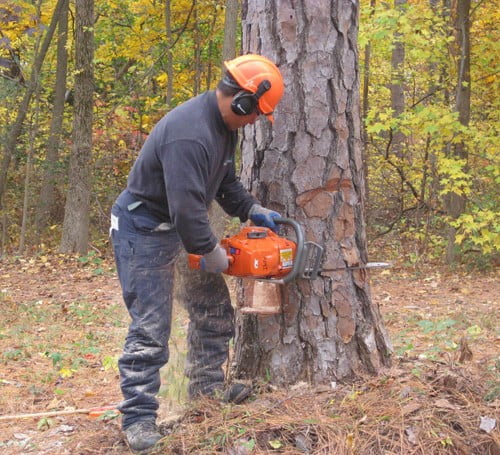
All the tools that are so useful for DIYers can potentially harm you or people around you. Wrenches, if slipped while in usage, can injure your knuckles. Hammers, if not correctly used, can break or crush your thumb.
But the injuries due to these tools heal quickly and are not very serious, but when we talk about a chainsaw, they can take away a person’s life if not properly used. We are dealing with sharp blades that, when in use, move at high speeds, mostly very near to the user’s body.
The improper usage of a saw not only harms the user but also hurts the people around it. While using the chainsaw, it throws away small pieces of wood at high speeds. This can hurt people and permanently damage an eye if you are not wearing a protective kit. If you are cutting branches, note down that they are under extreme stress and can spring back, injuring you or the people around you.
The worst nightmare ever possible for a chainsaw user is a wrong fall of the tree he just cut down. It can fall on the user or even on the people around him/her. It can torture a person to death or cause permanent organ damage if no medical care arrives quickly. Another potential issue with a chainsaw is Kickback.
How to Avoid Kickback?
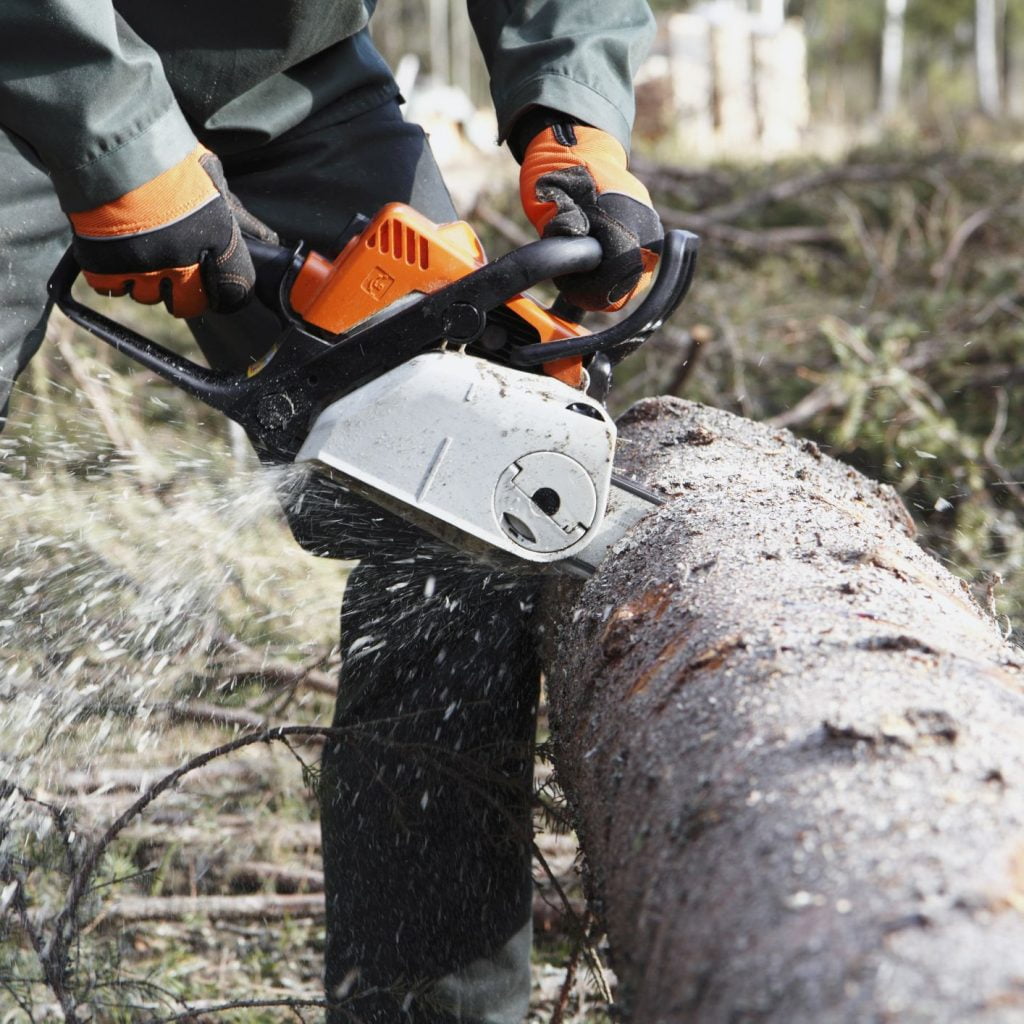
The chainsaw’s design is such that it cuts either due to the top or the bottom of the blade. Irrespective of this, the kickback zone lies at the top part of the blade’s end tip. Whenever anything meets the kickback zone, it changes the direction of the chainsaw. This direction is usually backward, straight towards you!
It becomes essential to deal with Kickback and take necessary precautions to avoid it. To reduce possible injury chances due to a kickback, one needs to keep the chainsaw below the shoulder height.
When using a chainsaw, make sure that you are holding it with a firm grip to avoid kickback at all costs. Having the tool properly sharpened is also a must along with wearing safety gear such as safety pants, glasses, a helmet, gloves, and earmuffs, etc. Last but not the least, you should stand at one side of the saw while cutting. Do not put any pressure on the tool and let it make the cut accordingly.
Also, regular sharpening and tensioning can reduce the chances of a kickback from your chainsaw. DIYers go with low power chainsaws are they are specifically designed for non-professionals. These chainsaws reduce the kickback problem because the chains are designed to keep this problem in mind.
Precautions and Safety Tips while Using a Chainsaw
- Always use a chainsaw with someone around you. If some mishap happens, they can save your life and help reduce the damage. Tell your companion to keep at least 15-20 feet and even more (about 40-45 feet) if you are felling a tree.
- Always carry a first aid kit (complete one).
- Wear the complete protective kit (more on that in the next paragraph of the article).
- Place both your feet firmly on the ground and achieve a proper stance.
- Always hold your chainsaw with two hands and ensure you have a proper grip over it. Also, hold your chainsaw a bit inclined, at an angle.
- Never force or apply pressure.
- For corded electric chainsaw, be aware of the cord.
- Never use a chainsaw to cut something higher than your shoulders.
- Never use a chainsaw when you climb up a ladder.
- Use a proper blade size (it depends upon the work you are doing). A 14-inch blade does the trick for firewood cutting, but you will require longer blades for more significant and thicker woods. As the length of the blade increases, it becomes more and more challenging to use it. DIYers should stick to the blade length of less than 18 or 20 inches.
Protection Kit for Using a Chainsaw
Whenever you are using a chainsaw, you need to protect your body. This includes eye and ear protection, protective gloves and boots, chainsaw helmet and chaps, etc. In exact terms, you require the following protective clothing:
- Chainsaw helmet or Hard Hat
- Faceguard or shield
- Protective goggles
- Earmuffs
- Gripping gloves
- Chainsaw chaps (Recommended)
- Steel toe boots
Eye and ear protection are a must to ensure that there is no damage to them. While the chainsaw cuts wood, small pieces of wood are thrown away by it at high speeds, and to avoid getting hit by one in your eyes, you need protective goggles.
A chainsaw makes a tremendous sound, which is irritating and can damage your ears. Earmuffs reduce the noise reaching your ears, minimizing the damage.
There are few chainsaw helmets available in the market with an attached faceguard or shield. Some even come with earmuffs. This type of helmet is beneficial.
Many people avoid using chaps due to their weight, but they are the real saviors from the ‘widow maker.’ The outer part is made up of nylon, and the inner part contains several Kevlar layers.
Using a chainsaw without the chaps is like going to war with no bulletproof jacket. Kevlar does the trick in both situations.
If accidentally the chainsaw falls or hits the chaps, then the Kevlar layer resists the motion of the blade, and then Kevlar fibers get stuck in the sprocket of the chainsaw. Thus, they stop the chainsaw’s motion. You and your legs can be safe due to these chaps!
Points to Remember Before Starting a Chainsaw
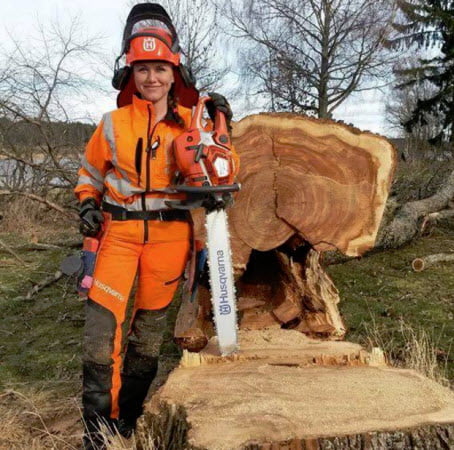
Start by reading the user manual to understand the chainsaw controls and features. Before you begin felling of trees, plan the spots where you can move safely once the tree begins to fall. Remember you are dealing with one of the most dangerous power tools, do not joke it off! Understand the hazards and complications before using it.
Wear the protective kit and ensure that nothing has been missed out. Check whether your saw has tension or not. To check, pull the chain towards you, and if it disengages, then it is loose, and you will need to adjust the chain’s tension. User manual or guide of the chainsaw has the instructions of tensioning or tightening of the chain.
If it is a gas-powered one, then check the fuel level. The gas and oil should be added in a ratio, according to the manufacturer’s instructions.
How to Start a Chainsaw
The process of firing up the engine is different for gas and electric chainsaws.
Gas Chainsaw
Place the chainsaw on the ground. Now, push the chain brake in the forward direction till it engages. If there is a choke, then turn it on. If there is a primer button, then push it about 5-6 times to pull gas into the carburetor, then turn on the ignition switch.
[amazon box=”B08226WJ65″]Now, hold the front handle of your chainsaw with your left hand with the thumb underneath, and place your right foot on the rear handle. Using your right hand, pull the starting handle till the engine starts. Now, push and pull the choke.
Electric Chainsaw
To turn on the engine, press the safety switch, and turn on the power switch. Press the throttle to get the chain moving.
[amazon box=”B00OIZ1XHW”]Even after the engine starts, the chain does not move. Press the throttle to get the chain moving. You can turn off the chainsaw using an ignition switch. Let it cool down before you store it.
Using the Chainsaw
To cut, take the saw at the spot and release the chain brake. The chainsaw works the best at full throttle, so do the same. Release the throttle only when you have finished your task.
A chainsaw is mostly used for felling, lambing, and bucking. Felling is the cutting operation of a standing tree. Limbing is cutting the operation of branches of a fallen tree. Bucking is cutting operation of the trunk of a fallen tree.

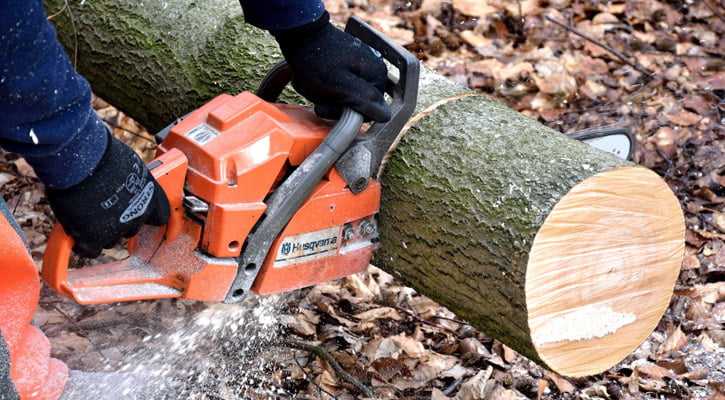








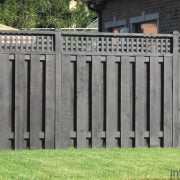

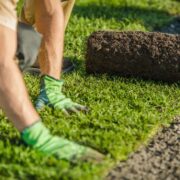

Comments